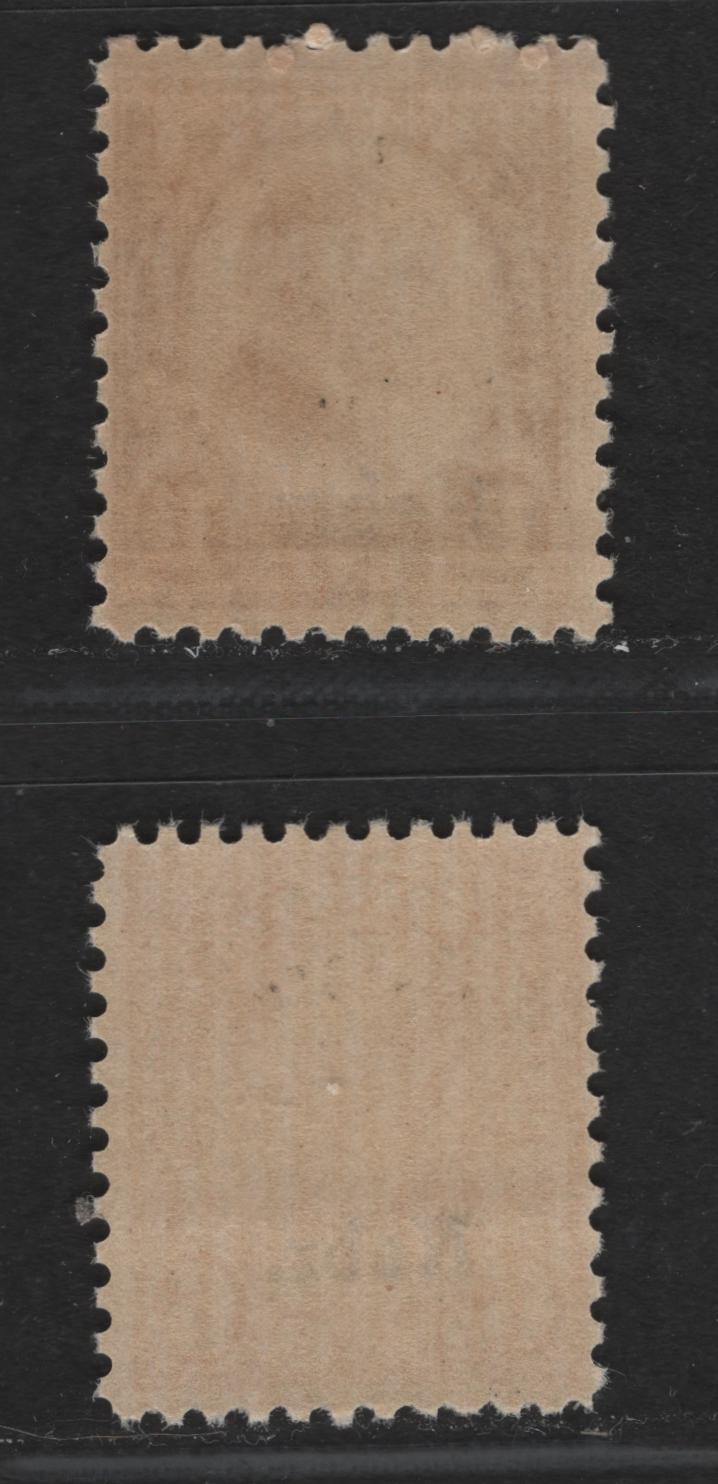Brixton Chrome
Lot 102 United States Of America #670, 675 1.5c, 6c Deep Yellow Brown & Pale Orange Harding & Garfield, 1929 Nebraska Overprints On 4th Bureau Issue, 2 Fine NH Singles
Lot 102 United States Of America #670, 675 1.5c, 6c Deep Yellow Brown & Pale Orange Harding & Garfield, 1929 Nebraska Overprints On 4th Bureau Issue, 2 Fine NH Singles
2 fine NH singles of the 1.5c, 6c deep yellow brown & pale orange Harding & Garfield from the 1929 Nebraska Overprints On 4th Bureau Issue .
2016 Scott Specialized values this at $76 for VF. Our estimate of the value for the condition offered is $38. The stamps offered here grade 70 as follows:
Centering/Margins: 40/70
Paper Freshness: 5/5
Colour: 5/5
Impression: 5/5
Absence of Visible Paper Flaws: 5/5
Perforations: 10/10
Although not listed in Scott Specialized, there are visible variations in the spacing of the rollers used to apply the gum to the early rotary press printings, and the pattern of gum breakers that were applied to sheets in order to prevent curling of the stamps. On this issue, the early printings appear to show 14 vertical striations or ridges in the gum, and a single gum breaker ridge per stamp, or 2 ridges spaced 21mm apart, so that some stamps can show one gum breaker ridge at the top and bottom of the stamps. Later printings show either no vertical ridges in the gum or between 28-30 vertical ridges, and between 1 and 4 gum breaker ridges per stamp, as different gum breaker patterns were experimented with. This becomes very relevant for these overprints because the ridges & gum breaker pattern is one of the key tests to determine the authenticity of the overprints: genuine mint stamps will show 14 vertical ridges on the gum and 1, or at very most, 2 gum breaker ridges per stamp, spaced 21 mm apart, as this was the pattern in use in 1929 when these stamps were overprinted. A second test is to ensure that there is no imprint of the overprint visible on the gummed side (there isn't any on this lot). A third test involves comparing the shades of the colours to those in use in 1929 (these generally match). Obvious ones are the 1c, where the green should be yellowish, rather than dark green or blue green and the 9c should be salmon red, rather than deep rose red. The 8c should be olive green rather than olive bistre. Here is where things become a bit subjective. The true olive green, in the way most of us would picture it is a flat plate shade, that is all but gone by the time the rotary printings are made. The olive green that US dealers are referring to here is much closer to what I would think of as Olive bistre, and what they refer to as olive bistre (in lot 456) is really more of an olive yellow, in my opinion. Finally, a 4th test is to look at the actual overoprints themselves. You can cut a known certified stamp in half along the overprint and lay the cut half over the test stamp, but in my opinion, this isn't necessary, as the consistency of the ink is very distinct (a heavy dull, flat black), with the letters having a distict shape and spacing. Lot 476 are all fake overprints, and this lot will show you that most fakes can be spotted with a good loupe, as either the ink will be the wrong consistency, or the letters will be the wrong shape.
Share




